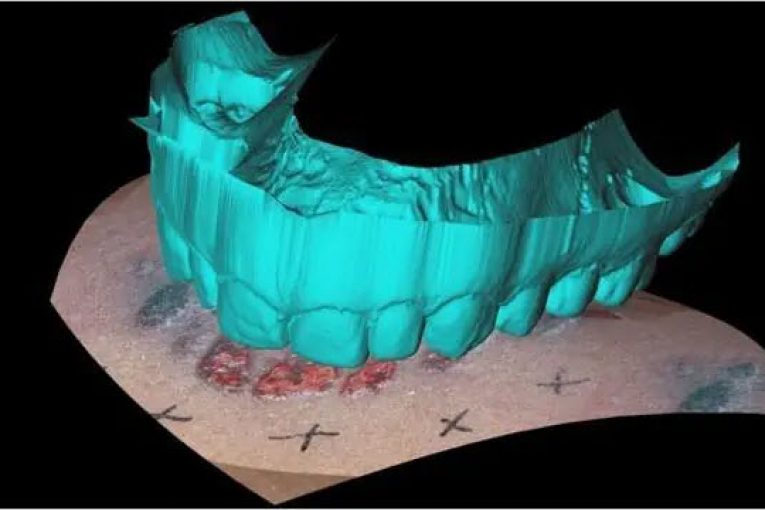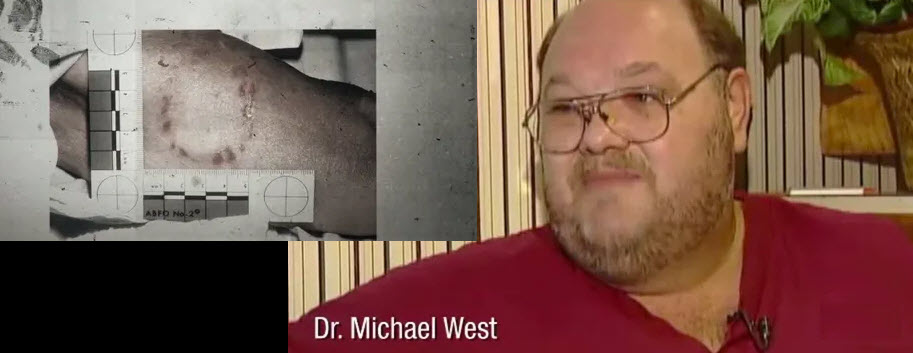

By Nancy Martinez
The first three episodes of Netflix’s The Innocence Files question the validity of forensic science, with three cases of wrongful convictions caused by the admissibility of bite mark evidence.
The case studies of Levon Brooks, Kennedy Brewer, and Keith Harward explore the role forensic sciences play in the criminal justice system. In all three cases, bite mark evidence that is awarded such assertiveness and credibility resulted in these three men wrongfully spending a total of over 65 years in prison. The Innocence Project showcases its work against wrongful convictions using DNA analysis and policy advocacy.
Episode 1
“The Evidence: Indeed and Without a Doubt”
Episode one introduces the narratives of two men from Noxubee County in Mississippi: Levon Brooks and Kennedy Brown.
On Jan. 15, 1992, Levon Brooks was convicted of the capital murder of three-year-old Courtney Smith on the night of Sept. 15, 1990. His conviction was supported by eyewitness testimony and evidence of bite marks left on the victim that matched Brooks’ dental imprints.
Levon Brooks, an acquaintance of Courtney’s mother, Sonya Smith, became a suspect of Courtney’s murder after forensic odontologist, Dr. Michael West, advised, and would later testify to a jury, that Levon’s dental impressions were a “really good match” for a potential bite left on the victim’s wrist. In West’s medical report, he asserted his confidence by stating that “indeed and without a doubt” the bite marks on Courtney were made by Levon Brooks.
Potential witness Ashley Smith, sister of Courtney Smith, was five years old at the time of the incident and was sleeping in the same bed as Courtney on the night of September 15.
“Uncle Bunky,” a popular TV show host for kids, worked alongside the Noxubee Sheriff’s department as an investigator of child abuse and assisted in the questioning of young Ashley. Ashley’s testimony  pointed to a suspect with a “quarter” in his ear. Investigators took this quarter to mean an earring on the suspect’s left ear, which they quickly connected to Levon Brooks.
pointed to a suspect with a “quarter” in his ear. Investigators took this quarter to mean an earring on the suspect’s left ear, which they quickly connected to Levon Brooks.
Innocence Project Attorney Vanessa Potkin later explains that the entire interview with Ashley was never provided to the jury. During the majority of the interview, there was clear evidence that Ashley’s responses were results of suggestive questions on behalf of “Uncle Bunky.” None of the incriminating responses were given on her sole ability.
As a result of a five-year-old witness and forensic expert testimonies, Levon Brooks was given a life sentence for the murder of Courtney.
Four months after Levon had been convicted for the murder of the three-year-old girl, a second three-year-old girl went missing in the same Noxubee community.
Christine Jackson, a three-year-old girl, went missing on May 3, 1992, from her home where she lived with her mother and her mother’s partner, Kennedy Brewer.
As a result of a lack of crime-scene evidence, Kennedy Brewer became the main suspect after it was determined that he was home with Christine without the presence of her mother within the window of the child abduction.
Christine was later found deceased in a nearby creek. The young girl had been raped and murdered. Upon further medical evaluations conducted by Dr. Steven Hayne and Dr. Michael West, 19 human bite marks were allegedly discovered on Christine’s body.
Once more, bite mark evidence led to the accusation and arrest of Kennedy Brewer for the murder of Christine Jackson.
Forensic odontologist, Michael West, again testified to the jury regarding the alleged bite marks. His direct comparison of Brewer’s dental imprints and the presumed bite marks on Christine were provided to the jury.
Brewer’s Defense Attorney Thomas Kesler had world-renowned forensic odontologist Dr. Richard Souviron, known for his work in the Ted Bundy case, testified against the validity of West’s bite-evidence claims.
Souviron’s testimony proved unsuccessful and Dr. Michael West’s assertiveness persuaded the jury to believe that the bite mark evidence proved Brewer’s guilt. The jury ultimately found Brewer guilty of Christine’s murder. Kennedy Brewer was given the death penalty and placed on death row at Mississippi State Penitentiary Parchman Prison.
Episode 2:
“The Evidence: The Truth Will Defend Me”
Dr. Richard Souviron begins the continuation of Part 1 by explaining the use of bite-mark evidence in the Ted Bundy case and how Bundy’s bite gave rise to the mass introduction of forensic evidence in the criminal justice system.
Barry Scheck and Peter Neufeld, co-founders of the Innocence Project, explain how the Innocence Project grew out of the need to use DNA as evidence of innocence in wrongful convictions.
In the year 2000, Kennedy Brewer reached out to the Innocence Project for help proving his innocence of Christine’s murder. The Innocence Project tested the DNA of the victim’s rape kit and Brewer’s DNA was excluded as the source of the semen.
In 2004, the District Attorney Forrest Allgood, who had convicted both Levon Brooks and Kennedy Brooks, agreed to a retrial for Kennedy Brooks. The Innocence Project investigation of Christine’s murder began in 2005 with the investigation of the origin of the marks on Christine’s body that were originally deemed to be bite marks.
Entomology research experiments provided an additional explanation for the marks on Christine as being possible crawfish bitemarks.
Given the rise of new evidence that pointed away from Kennedy Brooks, the Innocence Project reached out to Levon Brooks and began working on both Brooks and Brewer’s cases.
Episode 2 continues by giving a darker view of the life of incarcerated individuals in Mississippi. Video images of white prison guards on horses forcing groups of inmates, most of dark complexions, to work the prison’s cotton fields were displayed in the documentary.
Further investigation into the murder cases of Courtney Smith and Christine Jackson led to the discovery of a possible suspect, Justin Albert Johnson, who had a previous record of multiple home invasion assaults in the same community.
According to Sheriff investigator Eichelberger, Johnson had been a suspect in both cases but further investigation on him was abandoned as Brooks and Brewer became the main suspects of their cases.
In 2007, the Innocence Project conducted a DNA comparison analysis of Christine’s rape kit with DNA of possible suspects. Justin Albert Johnson was found to be a match to the DNA.
In 2008, during videotaped interviews, Johnson confessed to both murders of Christine Jackson and Courtney Smith. However, Johnson denied ever biting either girl. Johnson was arrested and sentenced to life in prison.
The surprising confession lacking any evidence of bites on either victim led to the questioning of the validity of the analysis Dr. Michael West had testified to in both murder trials. West defended his analysis in Brooks’ trial by claiming, “He bit that girl’s arm. Did I say he killed her? No. Did I testify he raped her? No. …. Do I believe as a death investigator he played a significant part in her death? Yes.”
On Feb. 15, 2008, a joint hearing of Levon Brooks and Kennedy Brewer was held and both individuals were released from prison and their convictions were exonerated as a result of Johnson’s confessions.
Episode 3
“The Evidence: The Duty to Correct”
The third episode of the series delivers a critical standpoint of the Innocence Project on the use of forensic science analysis in criminal trials.
Levon and Kennedy’s cases pushed the Innocence Project from focusing solely on the use of DNA to prove wrongful convictions—to the creation of a litigation task force that could result in rewritten law that may challenge the admissibility of forensic evidence.
The documentary explores the critique of the Innocence Project on the scientific academia by arguing that once scientists are placed on pedestals for introducing new scientific research, juries often believe anything scientific experts say.
Chris Fabricant, Innocence Project Attorney, urges the dependence of the National Academy of Science Report on the State of Forensics as it states that the fundamental principles of science are not present in dozens of so-called forensic sciences, including bite mark and bloodstain pattern analysis.
Fabricant publicly discussed his lack of trust in bite mark evidence during an interview for a podcast in which Dr. Souviron was present. Dr. Souviron asserts that despite any uncertainties now known in the field of odontology, he would still contribute specific bite marks to Ted Bundy because of the uniqueness of fractures in Bundy’s upper teeth.
Fabricant responds by rebutting, “Talking about chipped teeth or unusual bite marks… is gross subjective speculation masquerading as science.” This may very well be the standpoint of the Innocence Project in its entirety. Their efforts are focused on proving how unreliable science can be.
The acceptance of forensic odontology evidence is worldwide, however, the ABFO (American Board of Forensic Odontology) has concluded that there are wide discrepancies in agreements between scholars of what constitutes bite marks. This acknowledges the poor validity of expert odontology testimony.
Keith Harward, a third individual to have been convicted of murder due to bite mark evidence, was introduced in the third episode.
On Sept. 14, 1982, a man was beaten to death and his wife sexually assaulted in their home in Newport News, Virginia. The assailant, as reported by the wife, was reported to be wearing a sailor’s uniform and dog tags. In addition to the murder of her husband, Teresa Perron was left with bite marks covering her legs from her ankles to her thighs.
Keith Harward, being a Navy soldier, was reported to the police by his partner for biting her shoulder during a physical altercation. Based on the bite evidence, investigators connected this incident to the murder and assault of the Perrons.
Forensic dentist of New York, Dr. Lowell Levine, testified in court that “within a reasonable scientific certainty” Keith’s teeth indentations matched bite impressions on Teresa’s thighs.
Due to the testimony of Dr. Levine, Harward was sentenced for the murder of Teresa’s husband and the sexual assault of Teresa Perron.
In December of 2014, the Innocence Project finally tested DNA evidence from the crime scene that had been sitting during the 31 years Keith had been in prison.
The DNA had quickly excluded Harward as a match for the DNA found at the crime scene. In addition, the DNA proved to be a match for Jerry Crotty, another sailor who was present in Virginia at the time of the murder and assault.
On April 8, 2016, Keith Harward was released from prison and began his fight against the legislation that leads to wrongful convictions with his support of a bill that would challenge flawed forensic science admissibility.
The third episode of the first part of the series concluded with follow-ups on the officials and legislatures that were involved in the wrongful convictions of the three men.
In 2015, DA Forrest Allgood was voted out of office after 26 years. His replacement, Scott Colom, advocates for the investigations of wrongful convictions.
Dr. West’s expert testimonies have contributed to 6 six known wrongful convictions.
Dr. Souviron amended his expert testimony that led to the conviction of Gary Cifizzari in 1984 and Gary was released from prison after 35 years.
As of 2019, all 50 states continue to allow admissibility of bite mark evidence.
Half of all Innocence Project cases involve misapplied and flawed sciences.
Despite the journey of Levon Brooks, Kennedy Brewer, and Keith Harward through the criminal justice system, the first three episodes devoted valuable time to the humanity of each individual.
Levon had the opportunity to share his passion for art with the world, a passion that allowed him to cope with the pain he suffered during his 16 years in prison. Cancer did not allow Levon to see the production of a documentary that proved to the world his innocence. Now, the entire world can enjoy his art and the justice system can fight in his and the names of many others against the wrongful convictions that plague the criminal justice system.
Kennedy Brewer’s journey not only proves the flaws of the justice system, but it also proves the flaws of society that denies him the rightful compensation for spending a fraction of his life behind bars for a crime he did not commit. The hardships that follow the incarcerated years are often overlooked but it’s time to look closely as to why innocent individuals struggle to gain support from the system that is supposed to be set in place to protect them.
Keith Harward, who spent 33 years stripped of his freedom, continues to fight for the freedom of others through policy advocacy and strives to enjoy his rightly deserved freedom traveling the world. Keith’s fight will hopefully prove successful as waves of progressive officials join the fight for a fair justice system.
To sign up for our new newsletter – Everyday Injustice – https://tinyurl.com/yyultcf9





